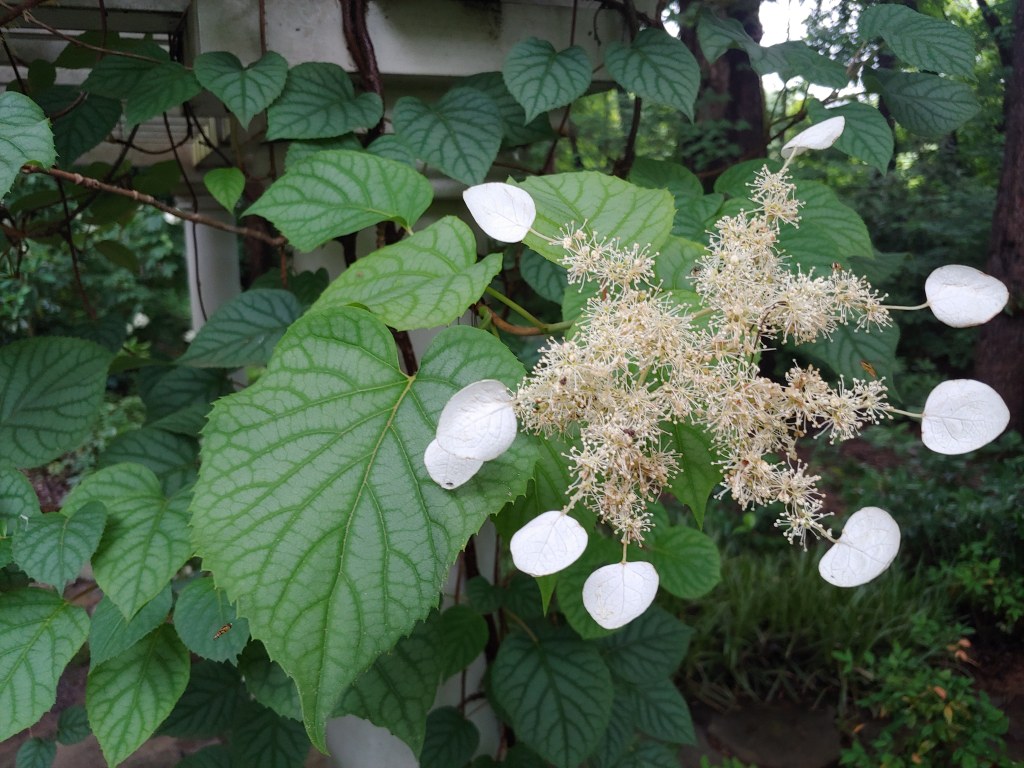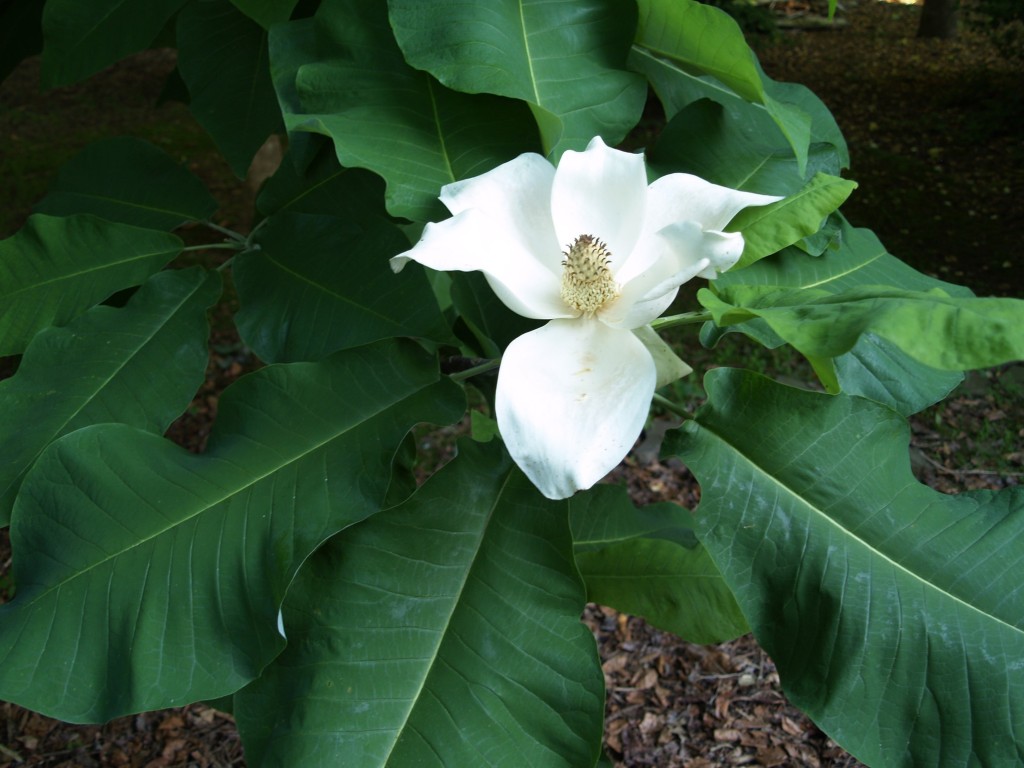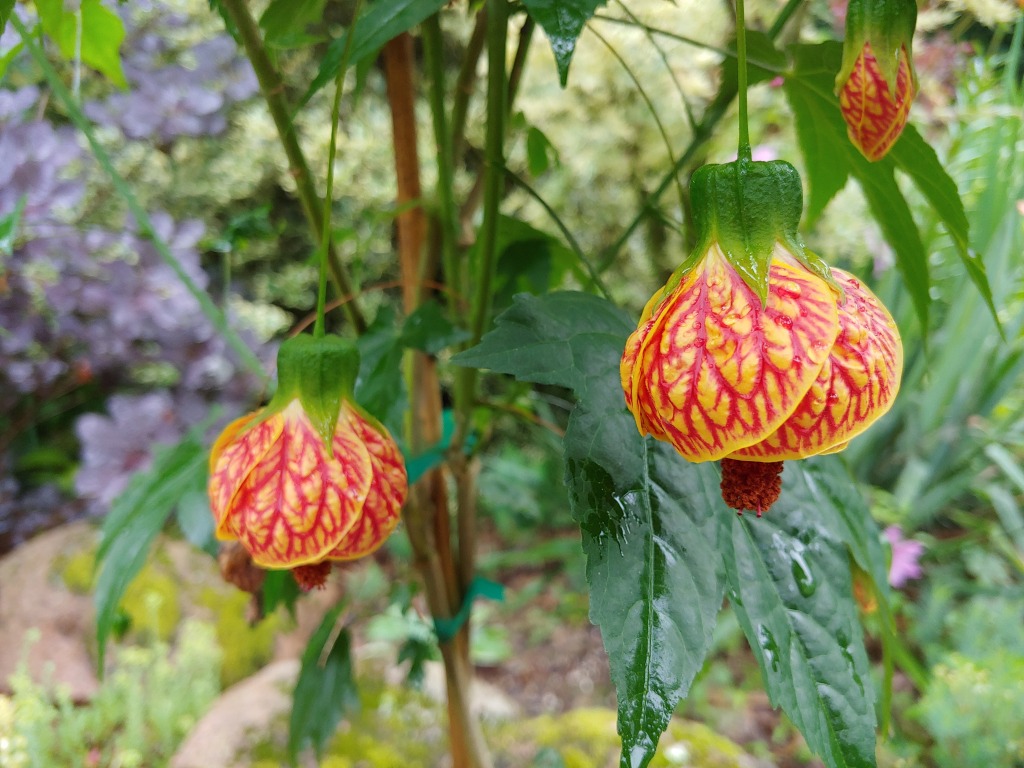I don’t recall when the ‘Moonlight’ Japanese hydrangea vine (Hydrangea hydrangeoides ‘Moonlight’, recently in the genus Schizophragma but helpfully changed to Hydrangea, below) was planted, but not in the recent past. Newly planted hydrangea vines often do not flower for several years, and whatever the timing a year ago was the first time it flowered. One flower, and this year there are none.

The vine sprawls acceptably up and over an arbor in the rear garden exactly as planned, but I suppose it could be too shaded for optimal flowering, or at least that’s the excuse I come up with for its lack of blooms. In any case, the foliage is quite nice and there’s no question that it’s a keeper, flowers or not. Of course, the gardener’s goal is plant in the best possible position, sun, shade, and soil conditions, for plants to thrive and also to flower. I suppose I’ve fallen short somewhere. Not the first time, but usually I have a better idea why I’ve failed, though a healthy plant is not much of a failure.

I am a sucker for large, tropical leaves in shaded areas, so I’ve planted native and Asian mayapples and any other large leafed plant I find that will tolerate our winter temperatures. I once grew an Empress tree (Paulownia) that was annually cut back to waist height. There was no room for a larger tree, and when it is cut back the flowers are removed, but the leaves greatly increase in size. Certainly, these were the largest leaves in the neighborhood, but it takes considerable effort to limit the growth of a tree that wants to be forty feet tall. Finally, I gave up, and I’ve not been tempted to try again. The bigleaf magnolia (Magnolia macrophylla, above) has leaves that are quite large, though not to compare with a pollarded paulownia’s, and it is much easier to manage.

I’m uncertain if Peltoboykinia (Peltoboykinia watanabei, above) is ideally placed, but it barely increases in size each year, and if it spreads by rhizomes it’s sure taking its time. I’ve ordered a second to be planted in richer and slightly damper ground, and no matter that its flowers are barely showy, it’s the leaves I’m after. While the name peltoboykinia sounds exotic, this Japanese native is not particularly special, just a sturdy perennial with large, divided leaves and small flowers. It fits well crammed into gaps along the stone paths and I’ll be happy if some day it grows too wide, requiring division.

I am quite pleased with two flowering maples (Abutilon x ‘Tiger Eye’, above) purchased this spring after seeing one in the greenhouse of a local public garden. Certainly, these are popular in warmer areas, but here both will join the long list of plants in pots that must be brought indoors for the winter. I suppose I’ll need to water them during the summer, but they’re growing vigorously and more flowers open each day. This is a perfect patio tree, and with the growth since its been moved outdoors it could grow into a small tree by summer’s end.